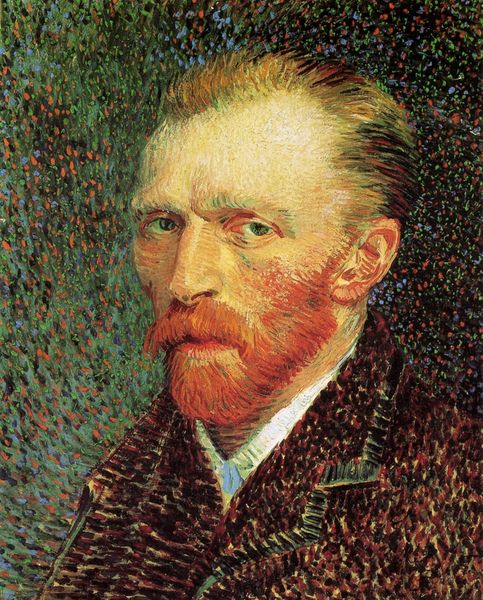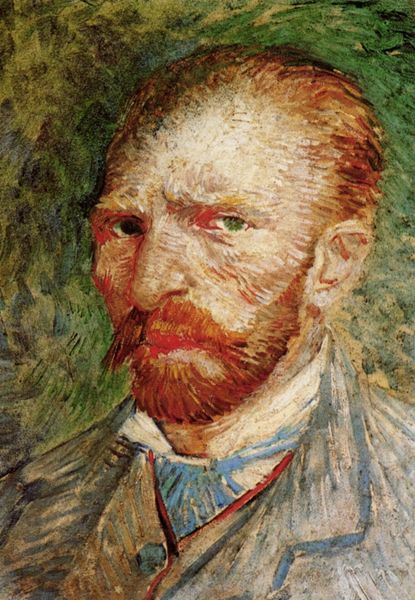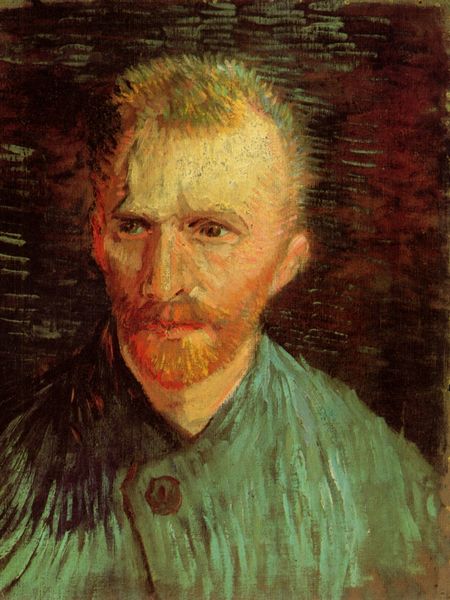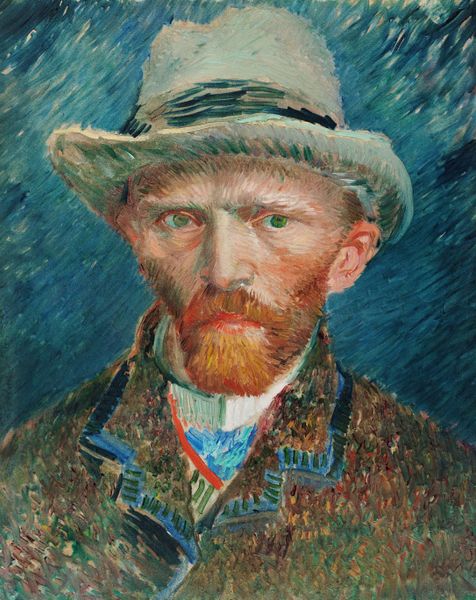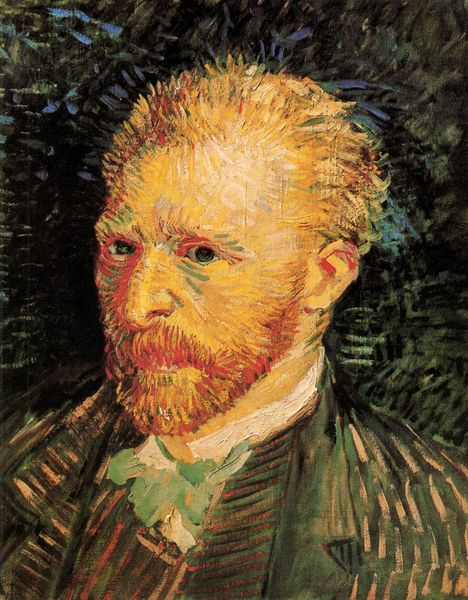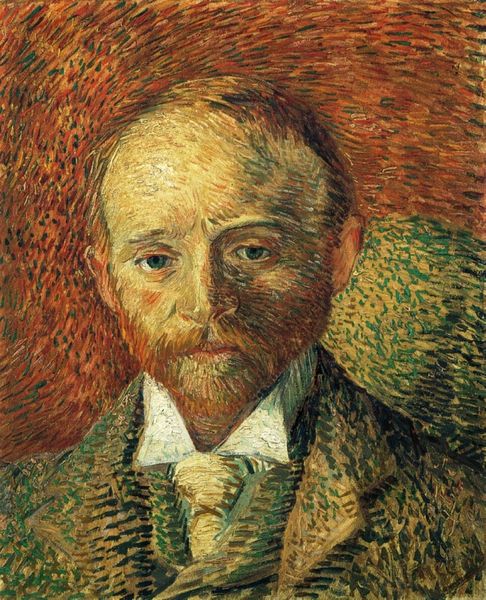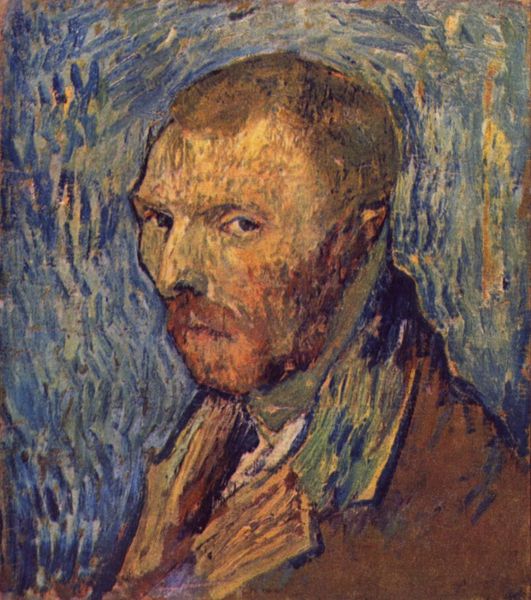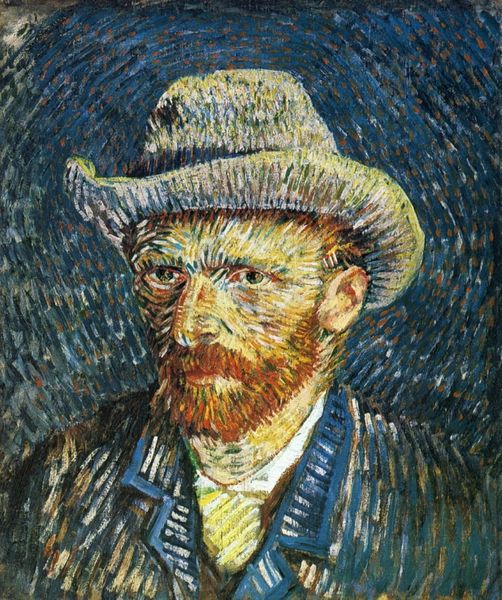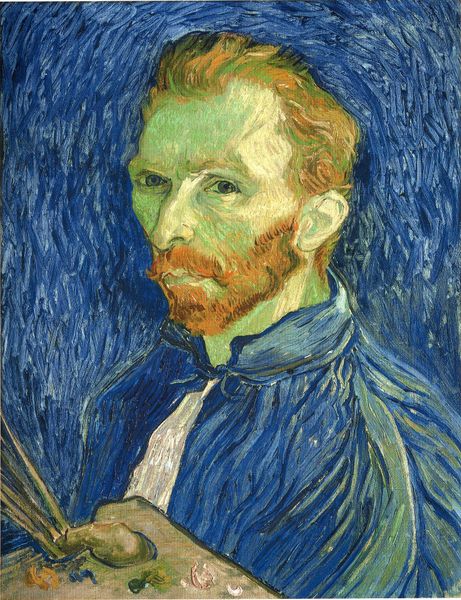
Copyright: Public domain
Editor: We're looking at Van Gogh's *Self-Portrait* from 1887, rendered in oil paint. The thick impasto gives it such a tangible presence, but there’s a real intensity in his gaze that I find arresting. How do you interpret this work? Curator: Arresting is a good word for it! It's as though Van Gogh is trying to see through himself, to capture something essential. He swirls color around himself. Like he's surrounded not just by pigment, but also the very wind! See how the brushstrokes almost vibrate, that energy swirling out into the world? It almost makes the air crackle, doesn't it? I wonder, what do you feel it evokes? Editor: It almost feels like…an aura, maybe? That energy definitely radiates outwards, even though he looks so contained. It feels contradictory. Curator: Precisely! Van Gogh uses the surface to show us the inner churn, you might say. Look how he models with color; there are strokes of complementary hues laid carefully. Think about what that could signify; how those colors speak when words might fail. Editor: So it’s less about accurately depicting himself, and more about expressing something deeper? Curator: Exactly. What else could be possible if he were attempting some kind of replication of the face? This wasn't simply about observation. For Van Gogh, art wasn’t about showing you what's there but showing what one feels being alive right there and now. The medium breathes here, it seems to bleed with truth! What do you think that means for his perception of “self”? Editor: I always thought self-portraits were about vanity, but seeing it this way, it’s much more of a confrontation. Thanks! Curator: My pleasure! We should maybe spend an entire year contemplating this. And, it's all right to see a little vanity in this: It's hard being this handsome, but that is quite another art discussion altogether!
Comments
No comments
Be the first to comment and join the conversation on the ultimate creative platform.
